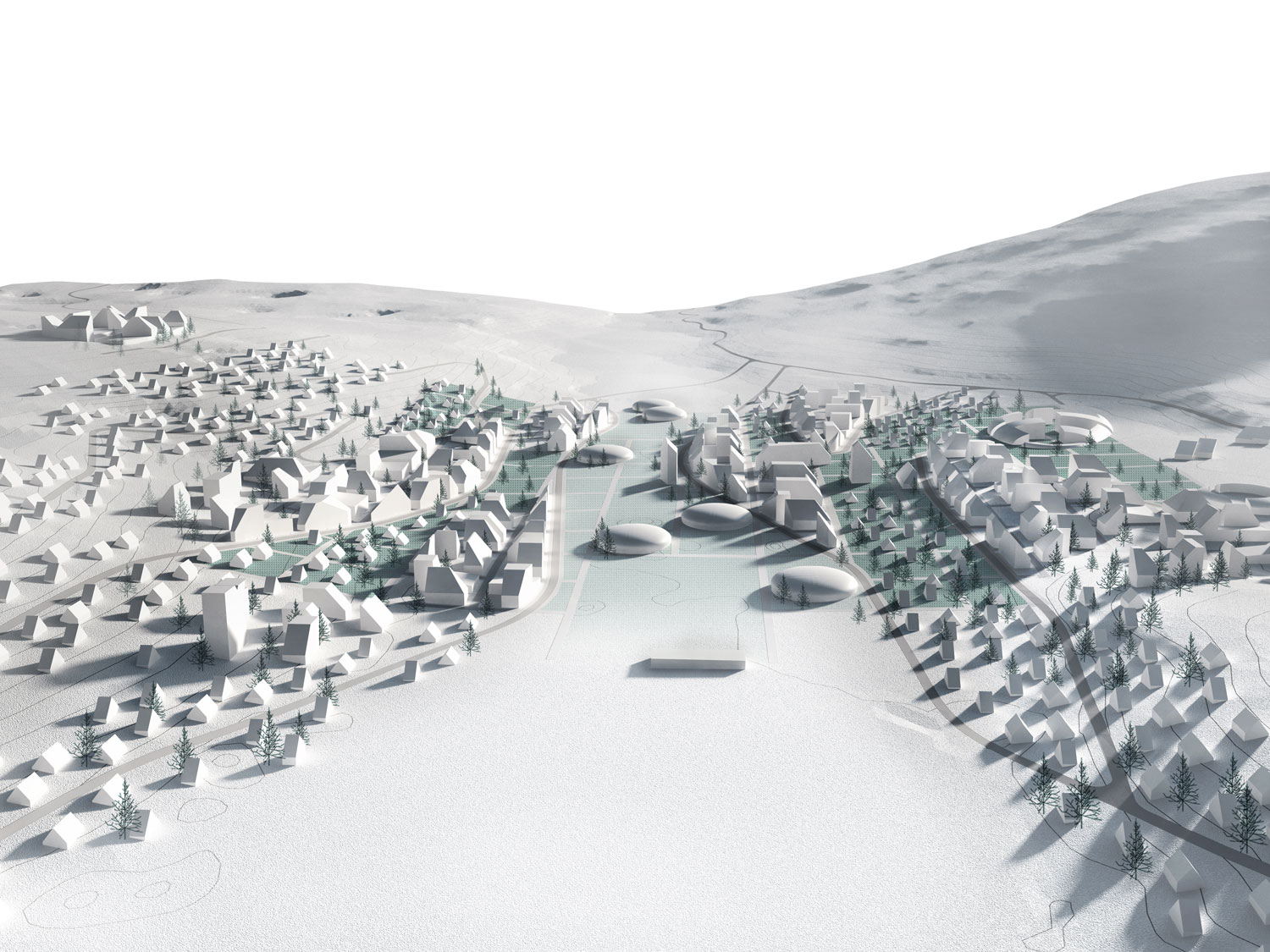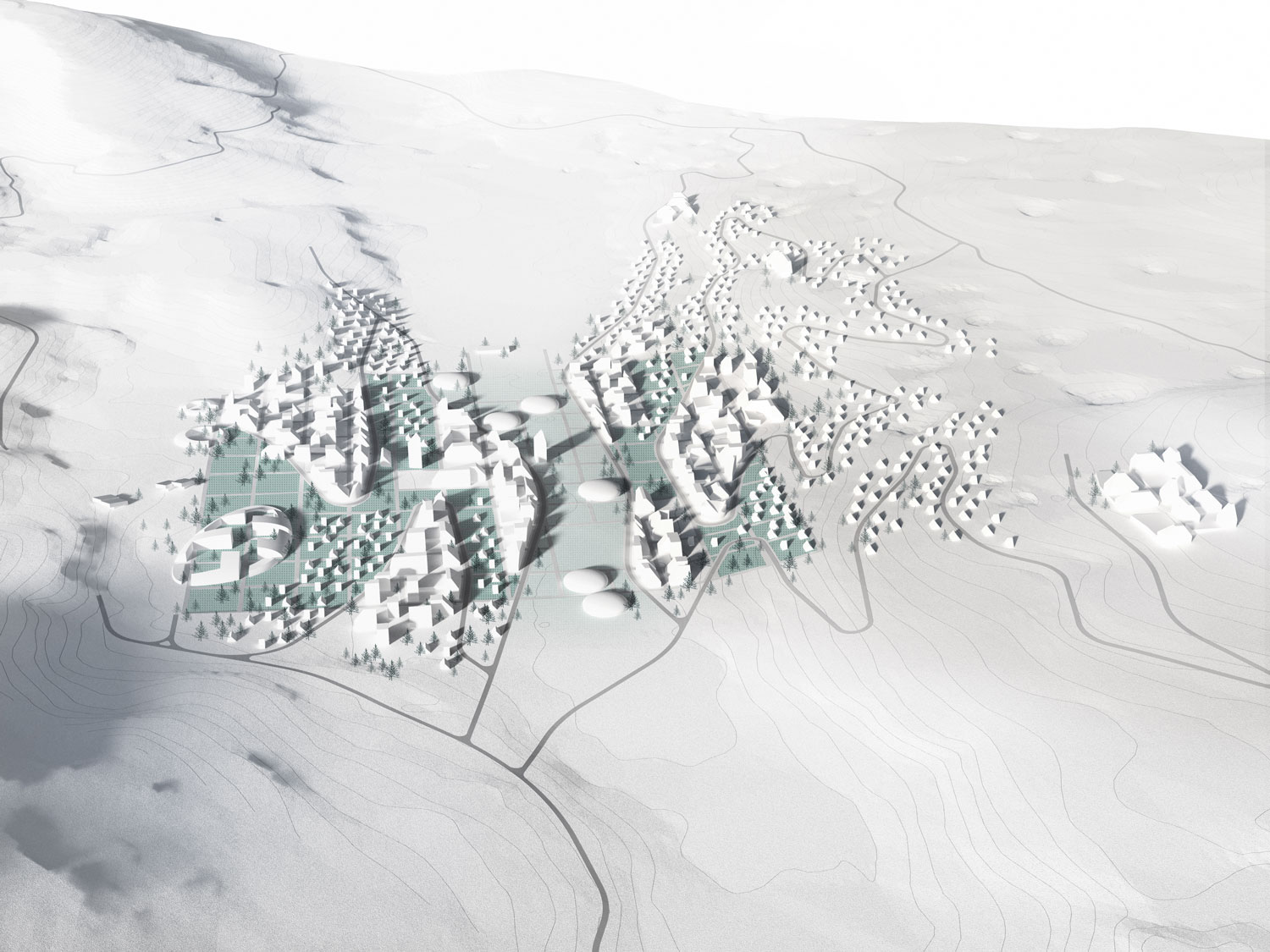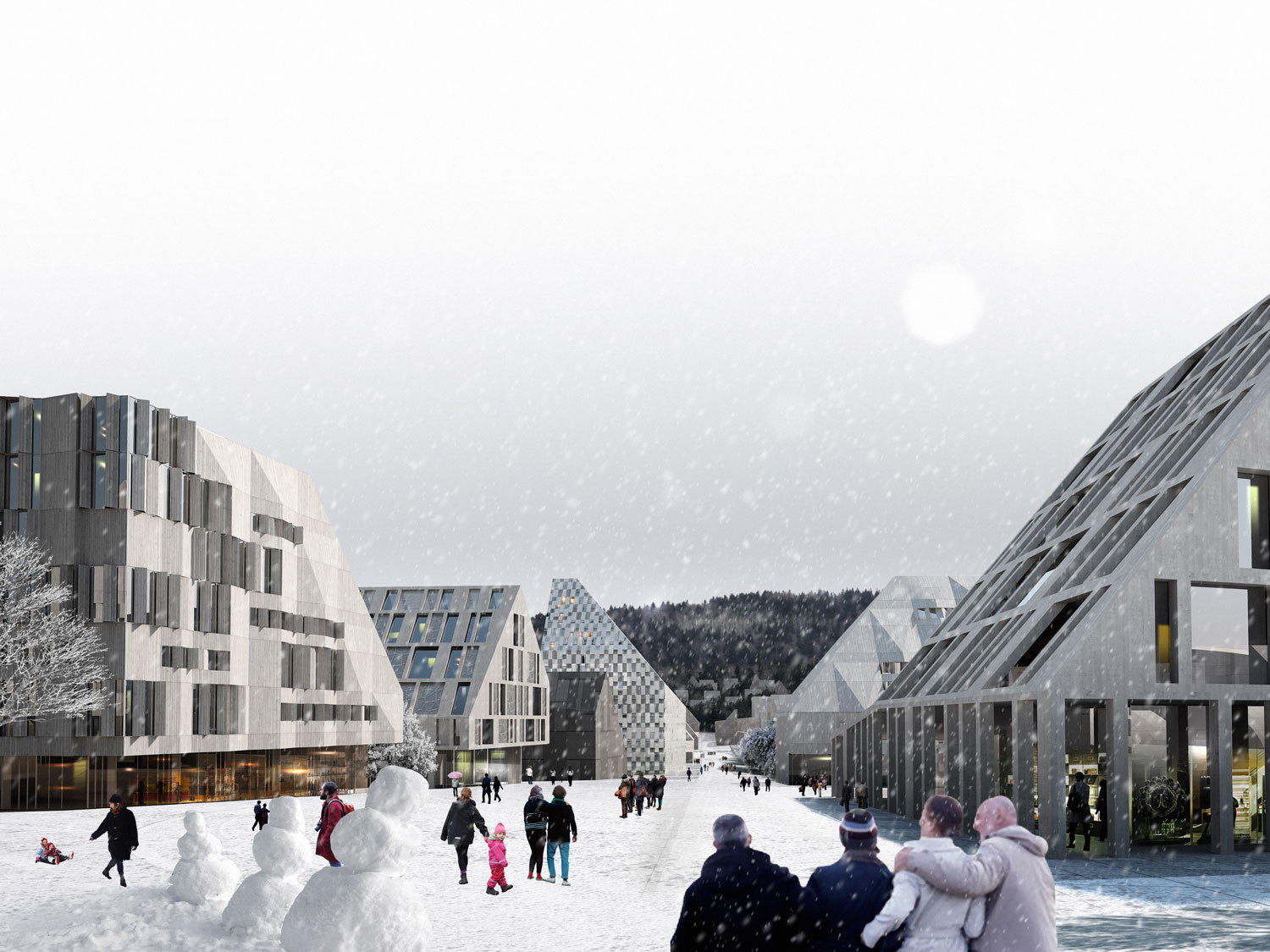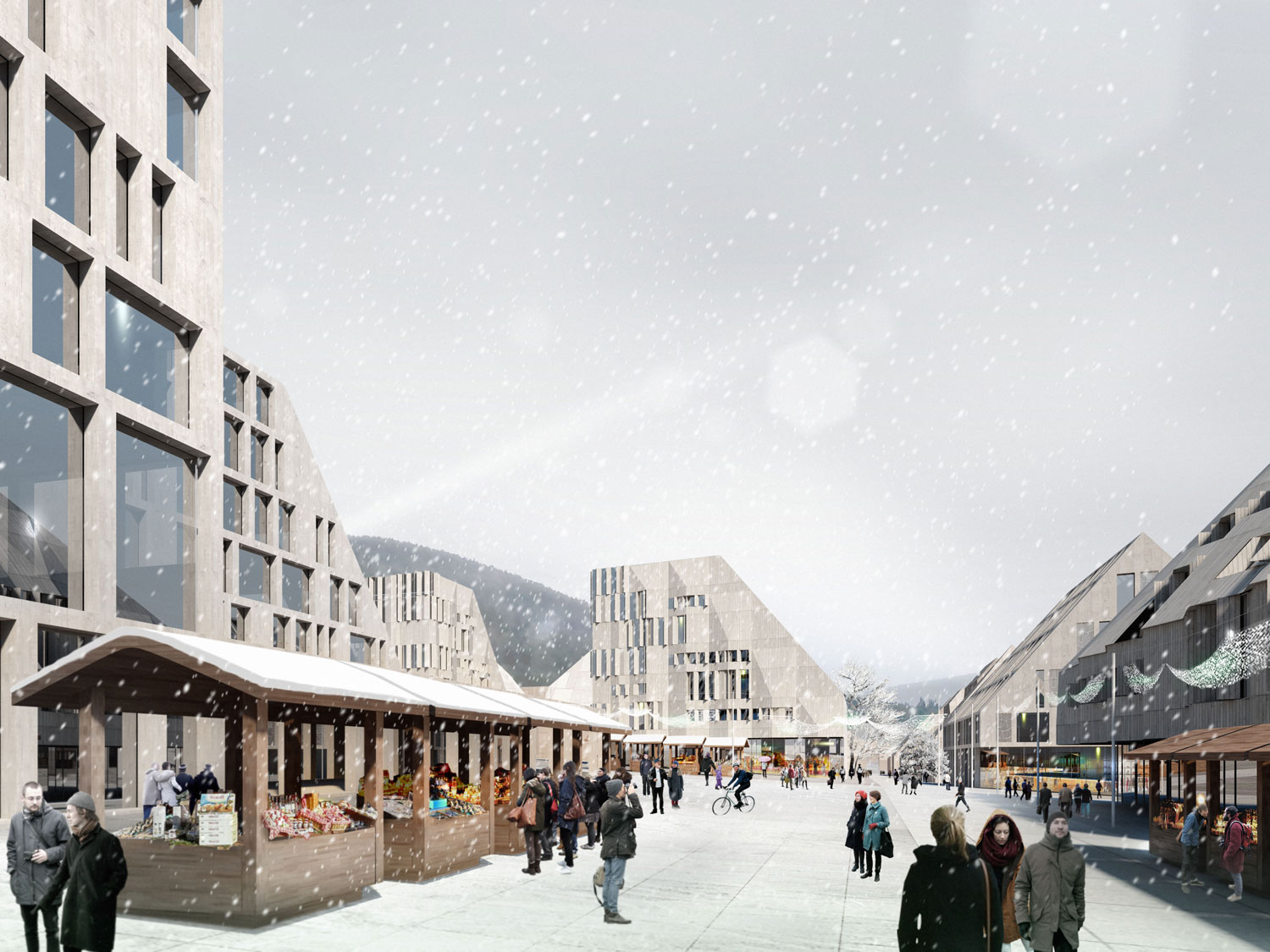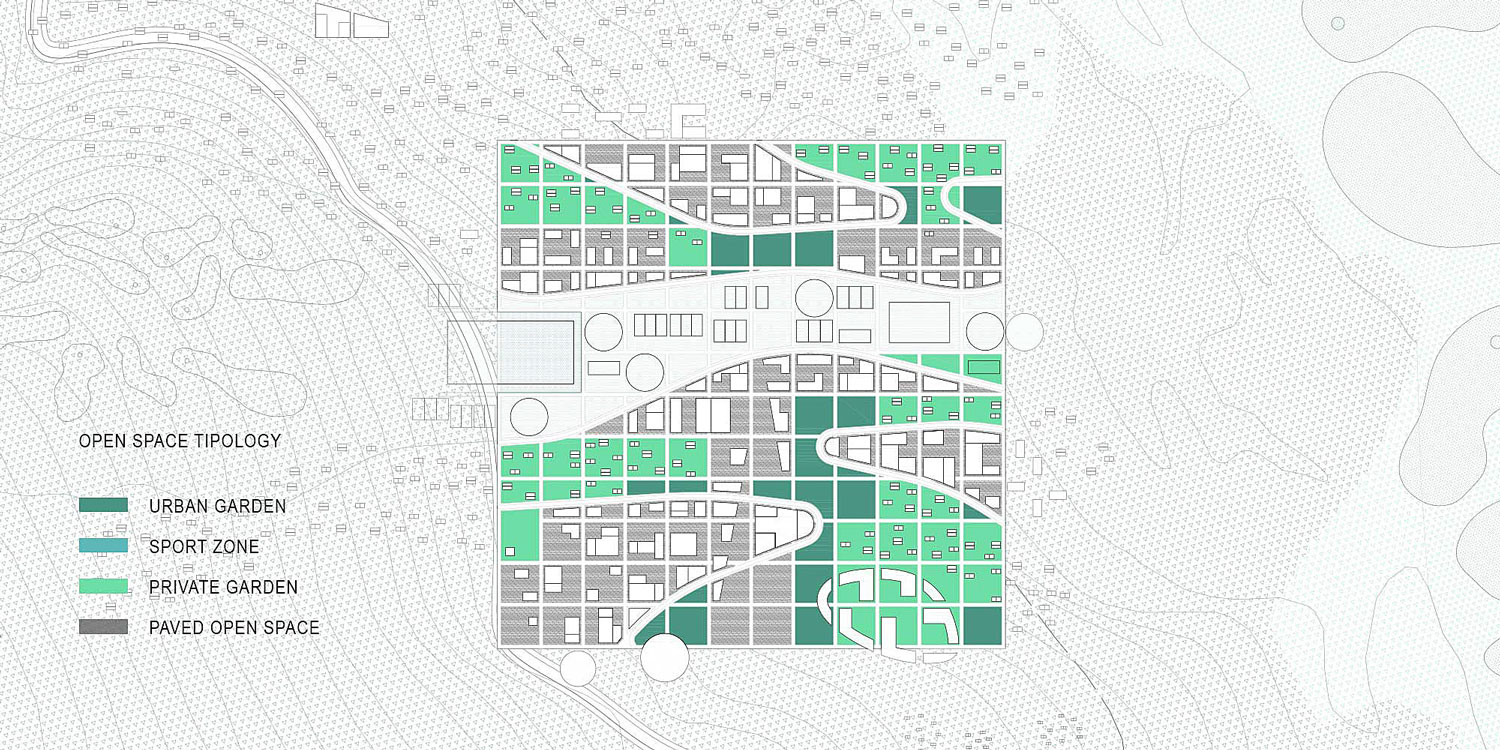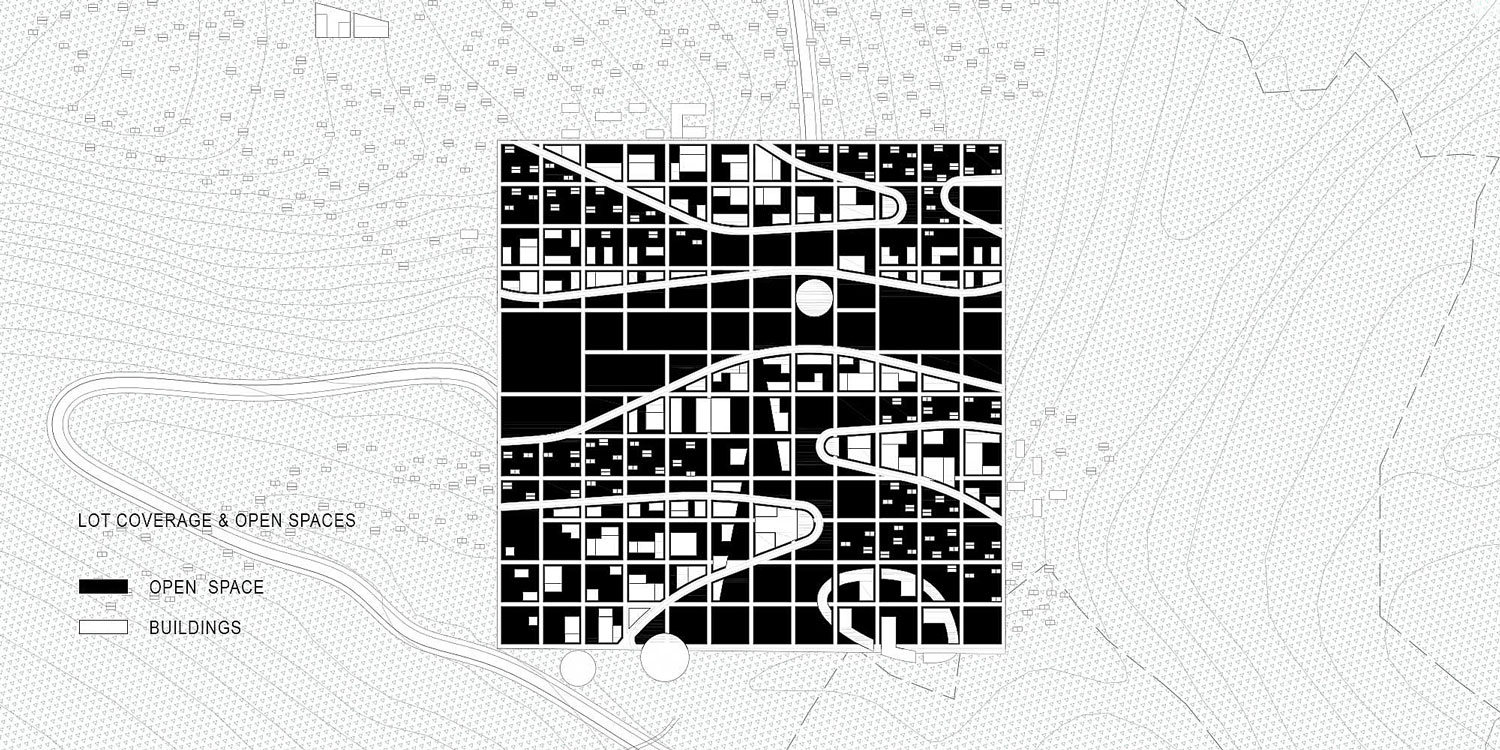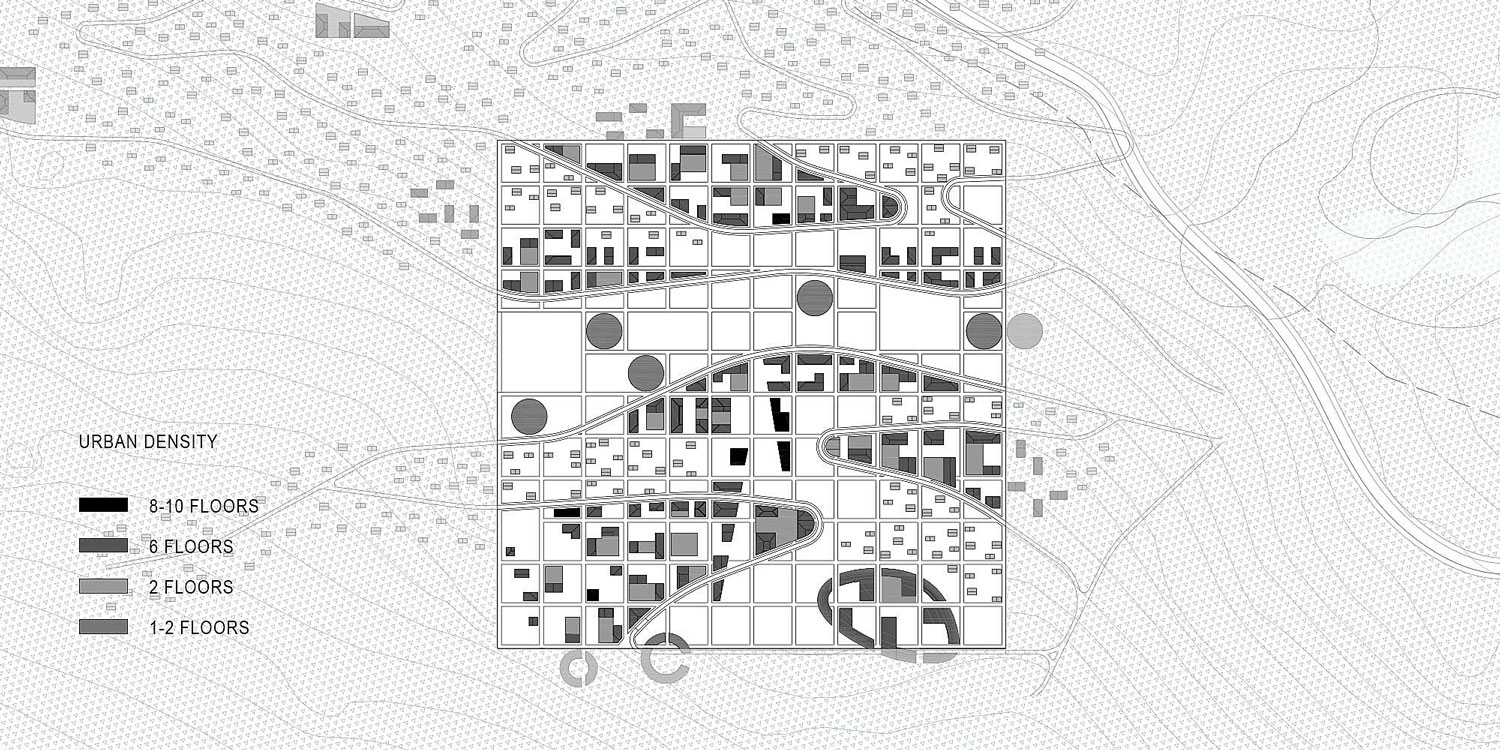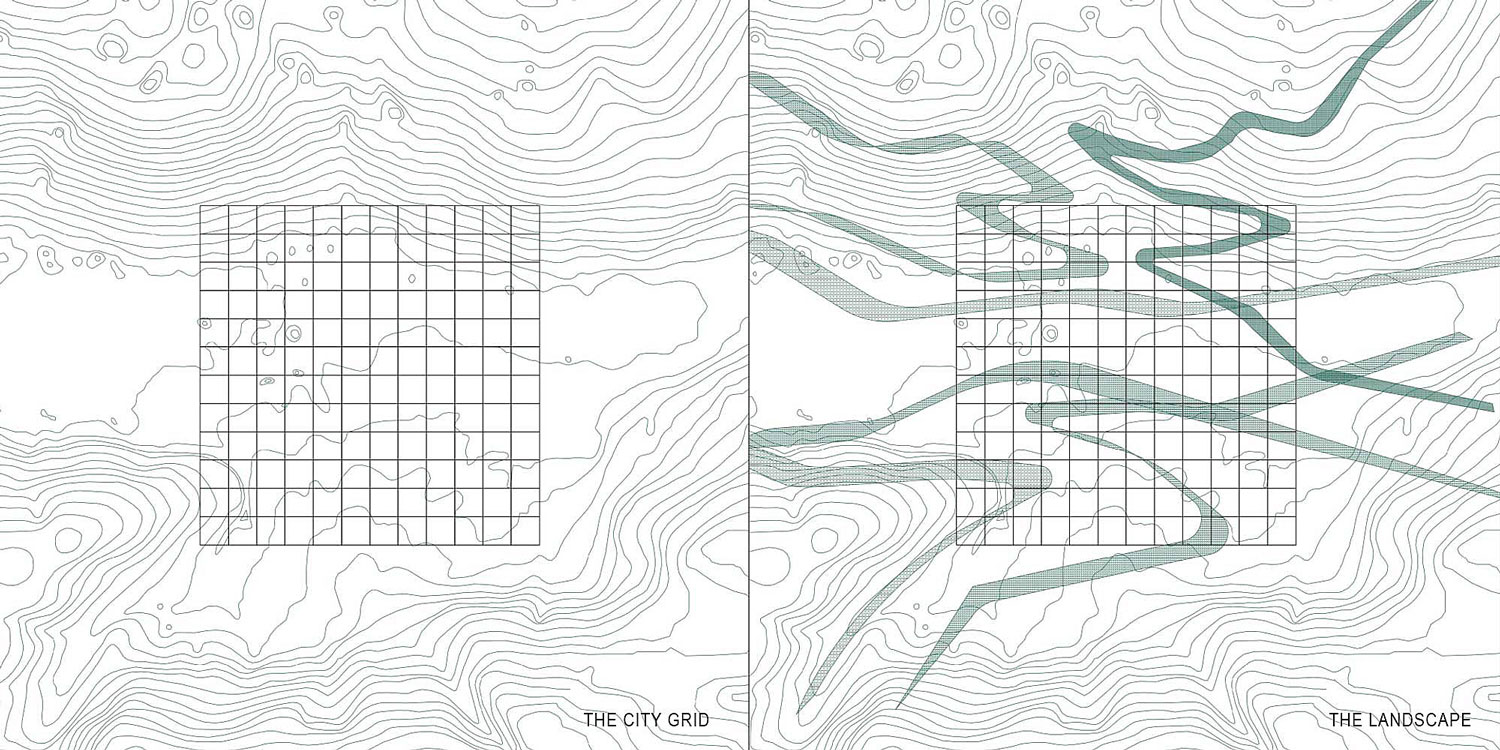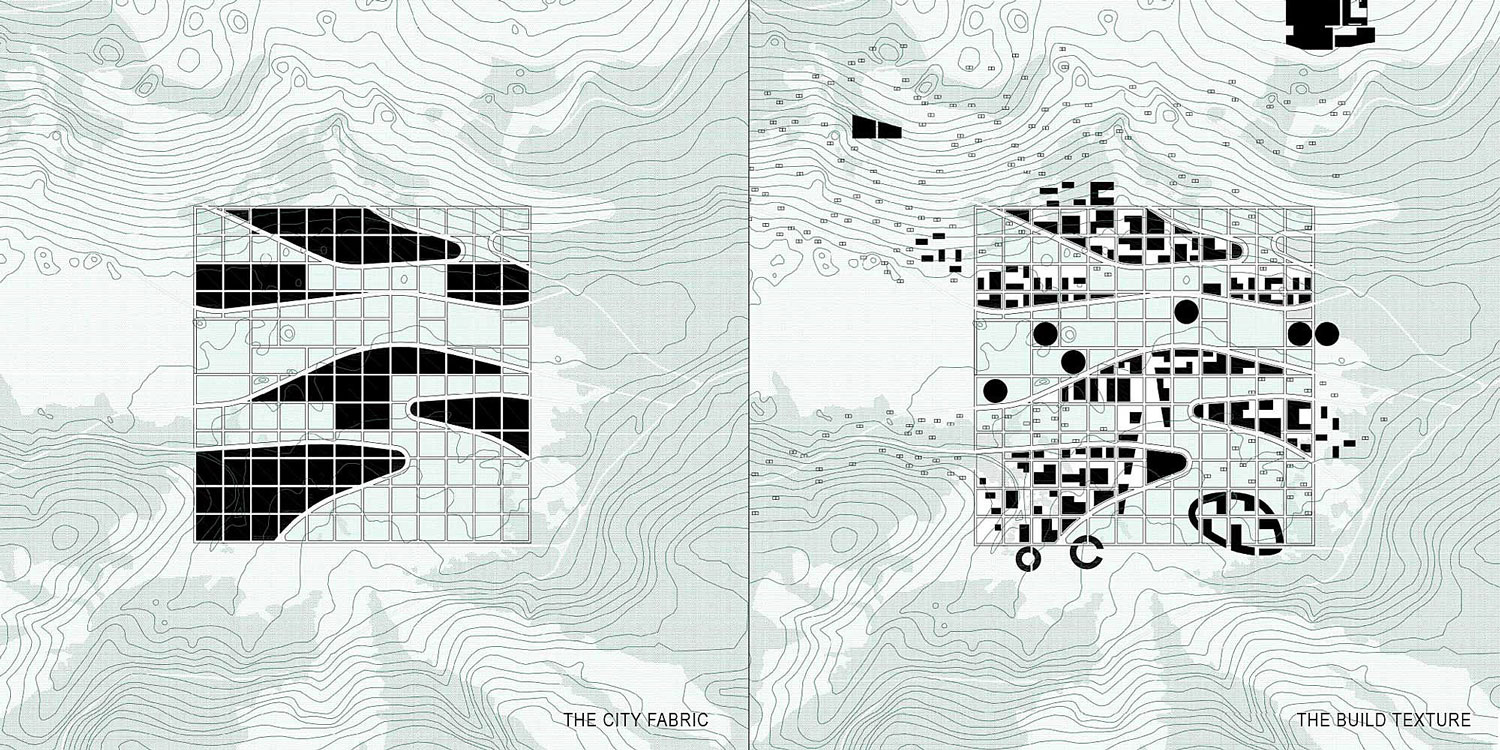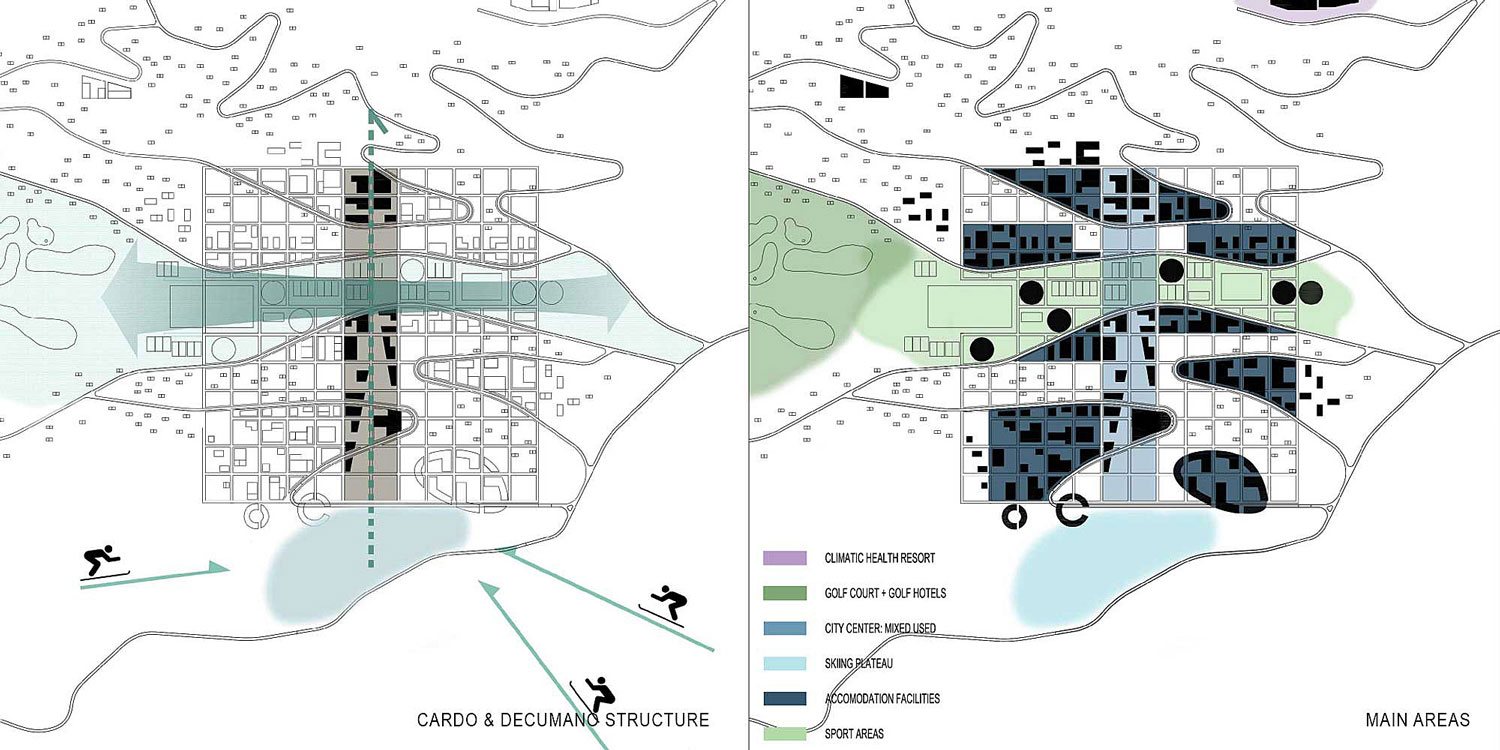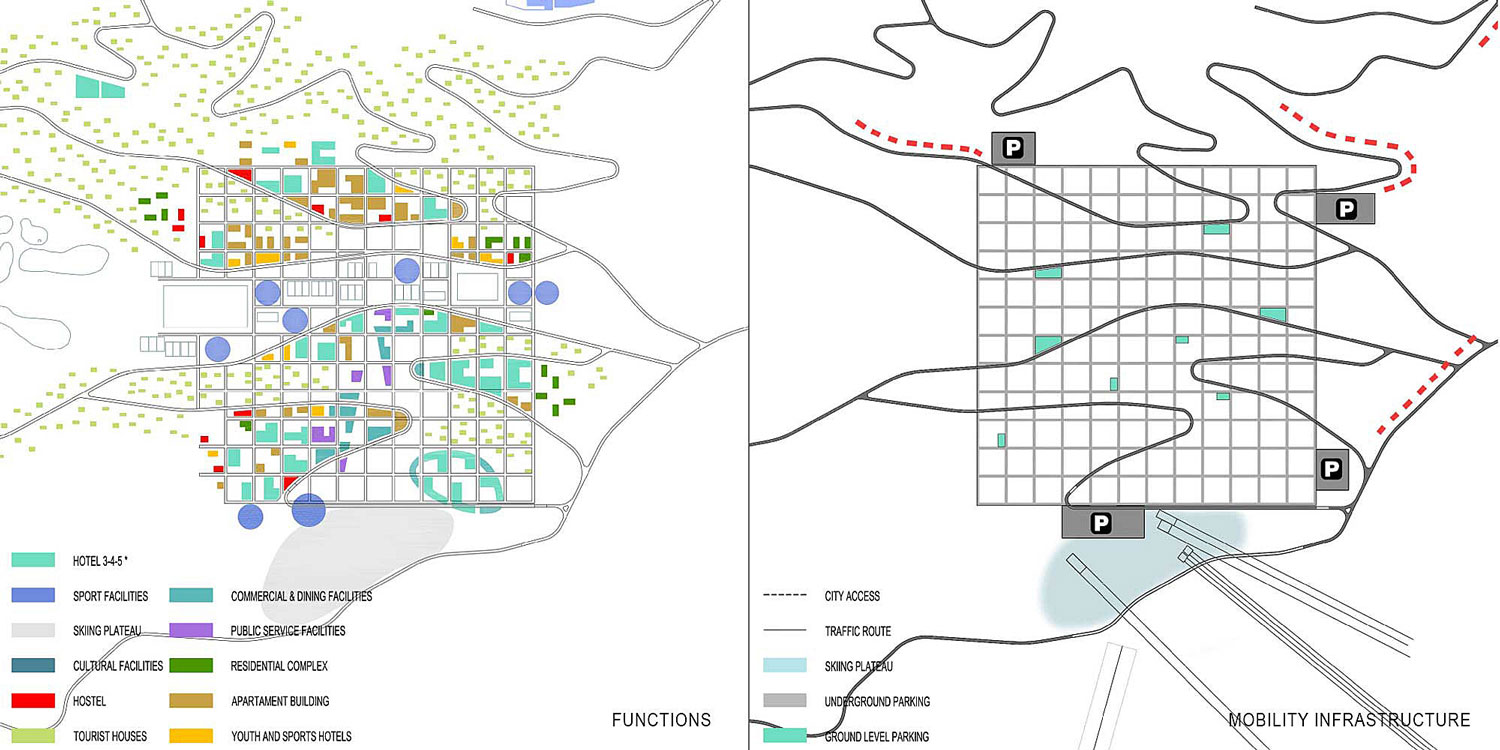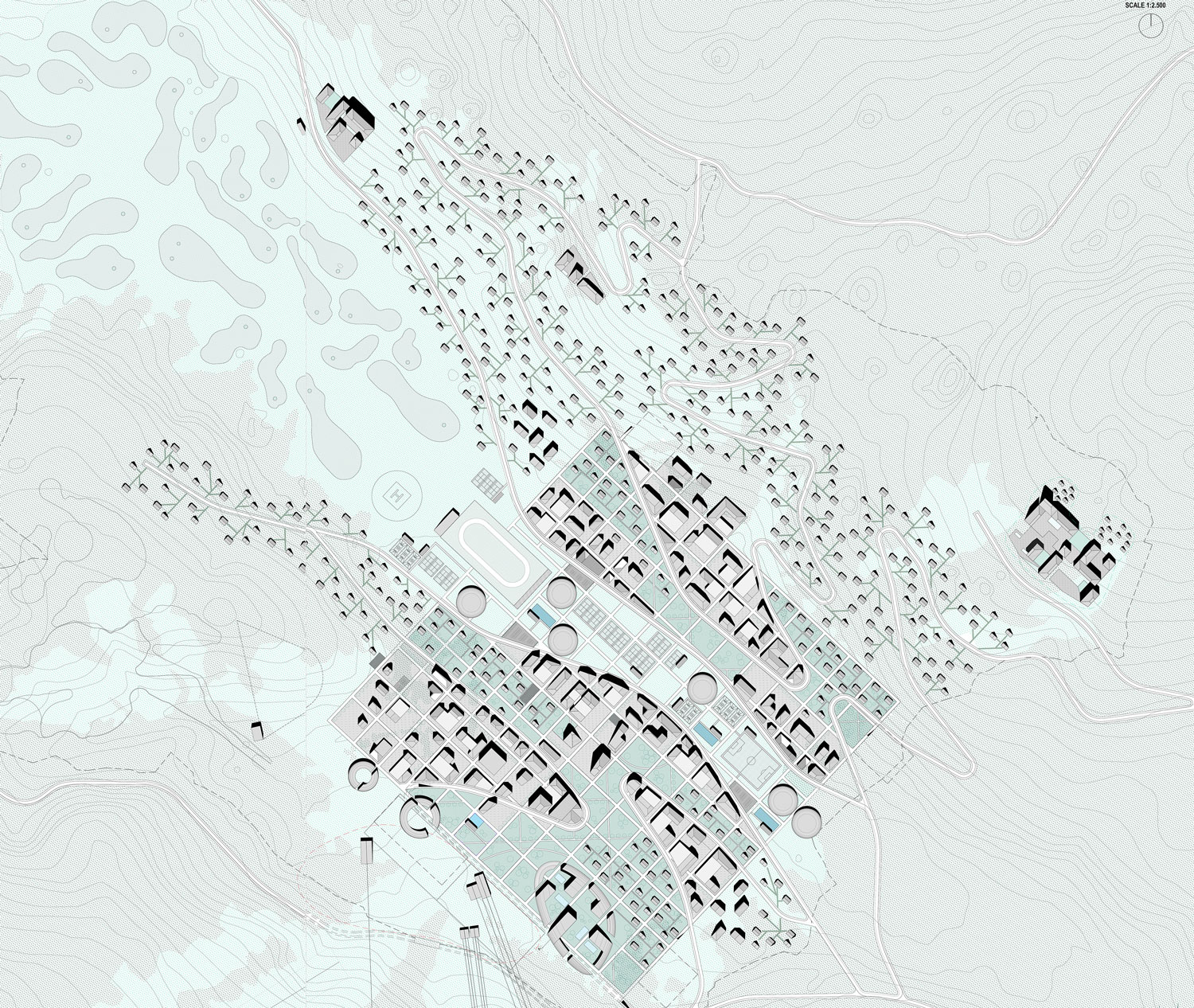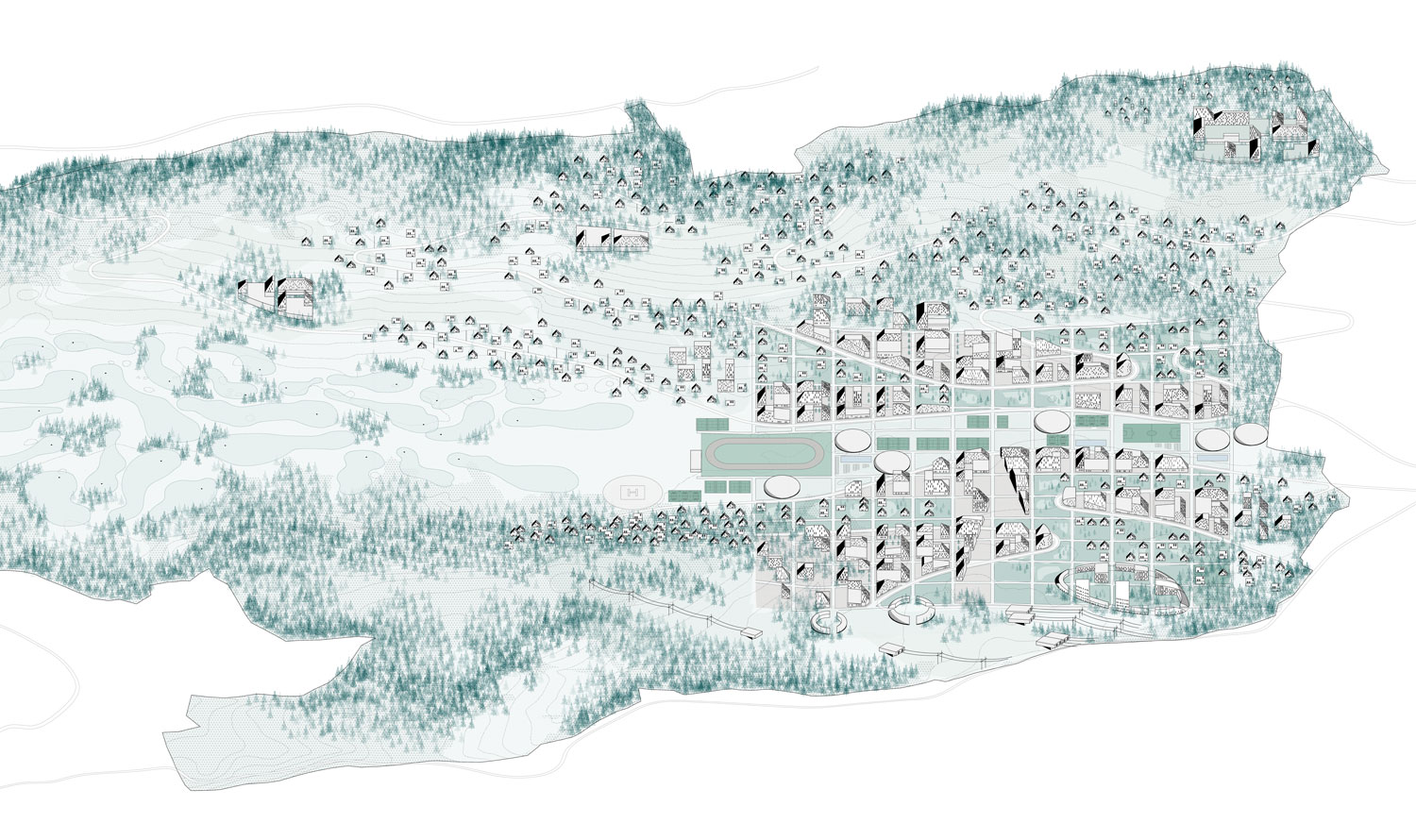1446-LAB-BA-2014
Client: GB IMMO d.o.o
Status: Competition (2014)
Clasification: Honour mention
Location: Klekovci, Bosnia and Herzegovina
Coordinates: 45.178222, 16.888166
Climate: Oceanic / maritime, Temperate
Material: Undefined
Environment: Mountain
Visualizer: Studio
Scale: 3.830.000 ㎡ Extralarge
Types: Masterplan, Public space
The principal concept that lays behind the project for Klekovača is the project for a new city, in other words the idea that the resort in itself is a city and thus that the core of the project is not how to design a new resort or a tourist centre but how to design a city.
This conceptual choice is based on different aspects: first of all on the physical features of future Klekovača, the overall dimension and the population that will live in Klekovača – around 20.000 inhabitants in its maximum capacity – are in fact similar to the ones of any European small town.
But also it is based on the role of the public sphere and of the public space of Klekovača, that, following the competition program, will have to be similar to the ones which characterize any urban context and its atmosphere: open, common, social, dense and various.
Finally, building cities is the single most important act of production within any society – from the antiquity to the contemporary time – and so treating Klekovača as a new city and not only as tourist centre will certainly give to the entire operation a stronger role toward the local and global community.
Starting from this concept – designing a new city – the question then becomes: how can we do it? Following this question we have chosen a model for the foundation of Klekovača and, together with the model, an Operating System. What we were looking for was in fact not a closed model, defined once for ever, but an operating system able to guide the growth and the transformation of Klekovača over time, through the different construction phases but also much after that.
The model we have chosen is the Roman model.
The Roman model is in a sense the unique real universal prototype for the foundation of a new city. It acquired over time a kind of universal meaning and a universal role. Why this happened is because the Roman model was not only about a formal geometric principle – the famous grid – but was a proper operating system – able to drive the foundation at the beginning but also all the transformation occurring over time, to keep together all the complex relationship which occur in a city, to support the life and the flows occurring in the city, to define the system of open space, etc.
A specific type of operating system the Roman System with all its rule and its criteria – cardo, decumano, centuratio, foro, limites, monuments, etc. – was the first real urban Open System.
The Roman model is in fact able to interact with the physical and social environment, with the geography, with the population, with the local habits and economy. And all was possible through to the definition of a geometric urban structure, as generic as possible.
The formal grid structure was thus a mean and not a purpose, a mean to create a real Operating System, which was the real aim of the Romans and the key of its success. The Roman model is spread through centuries and all over the world (also much after the Roman Imperial period).
